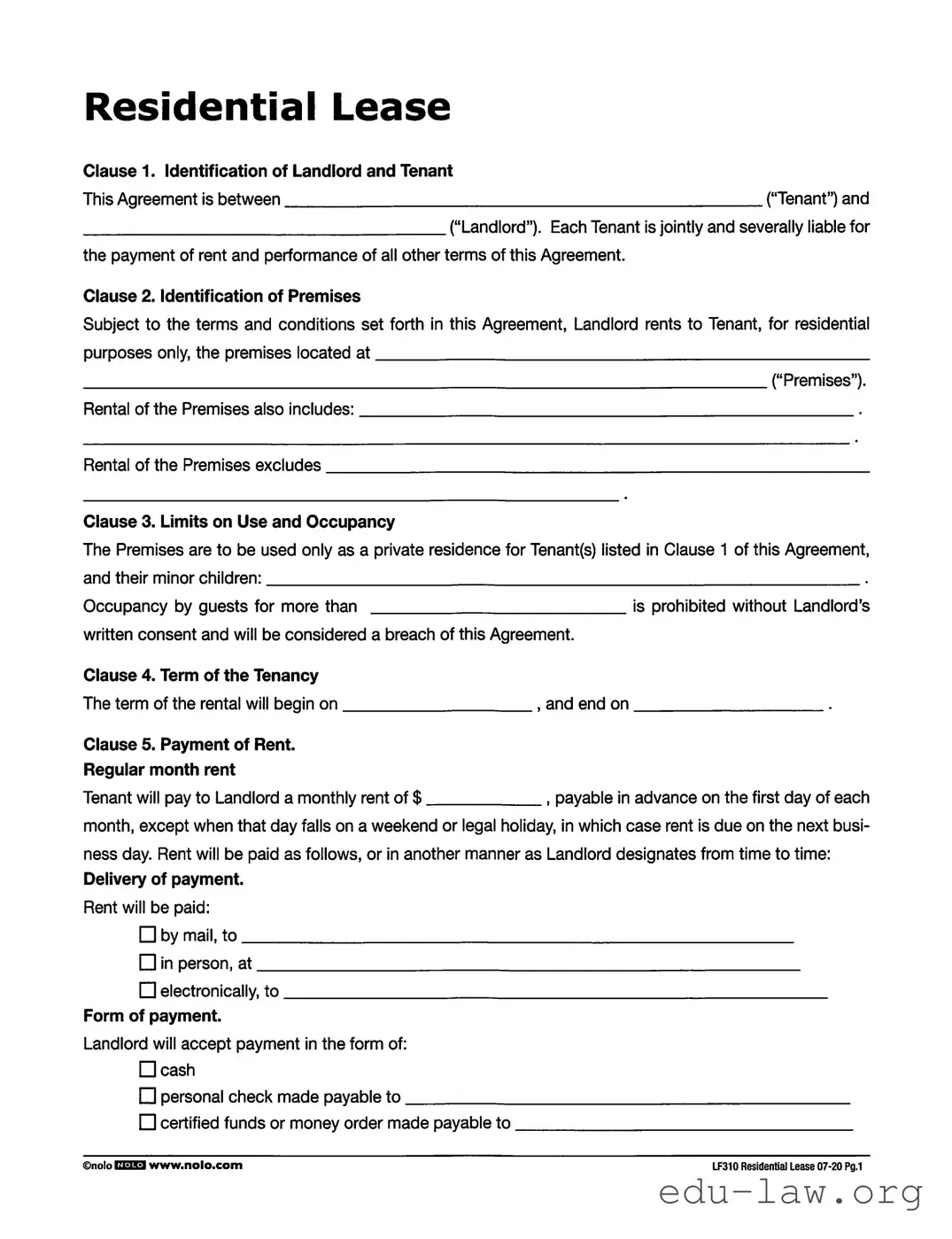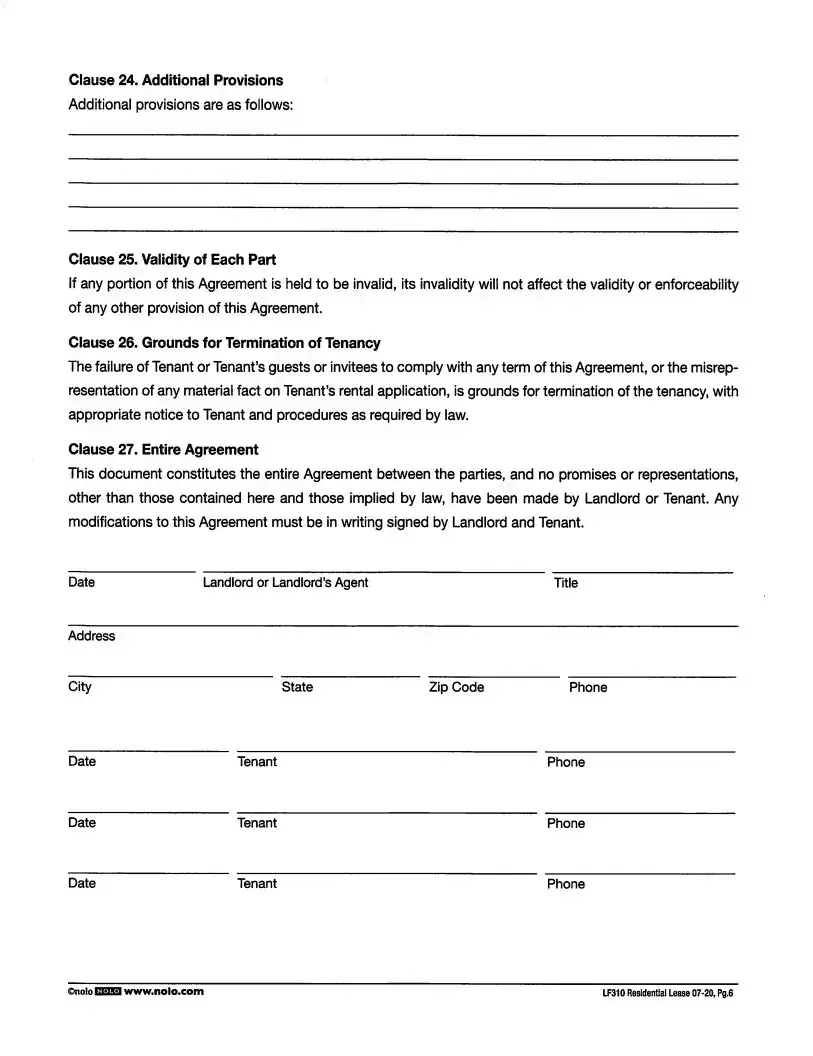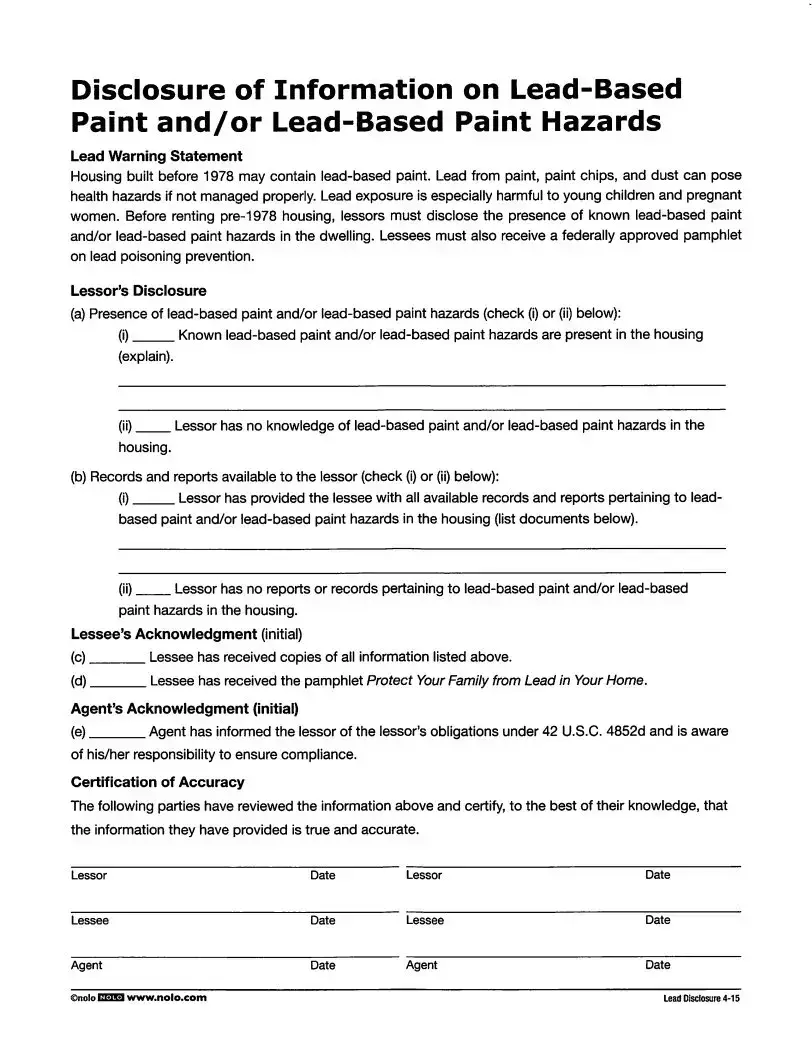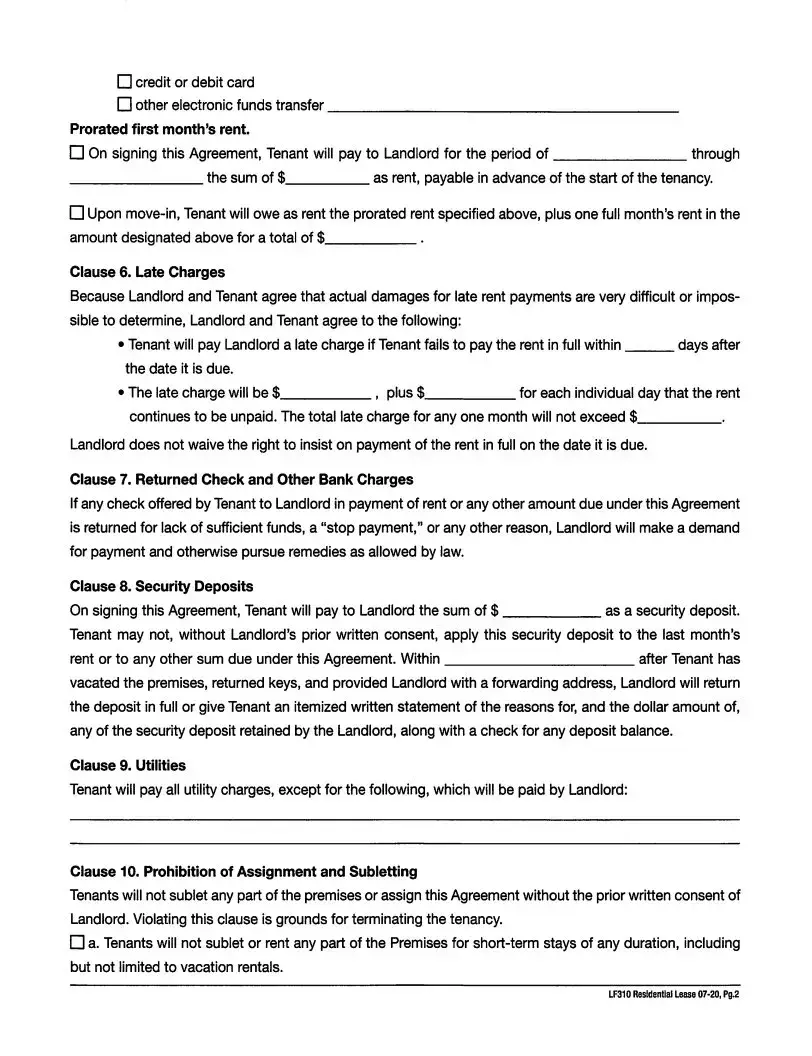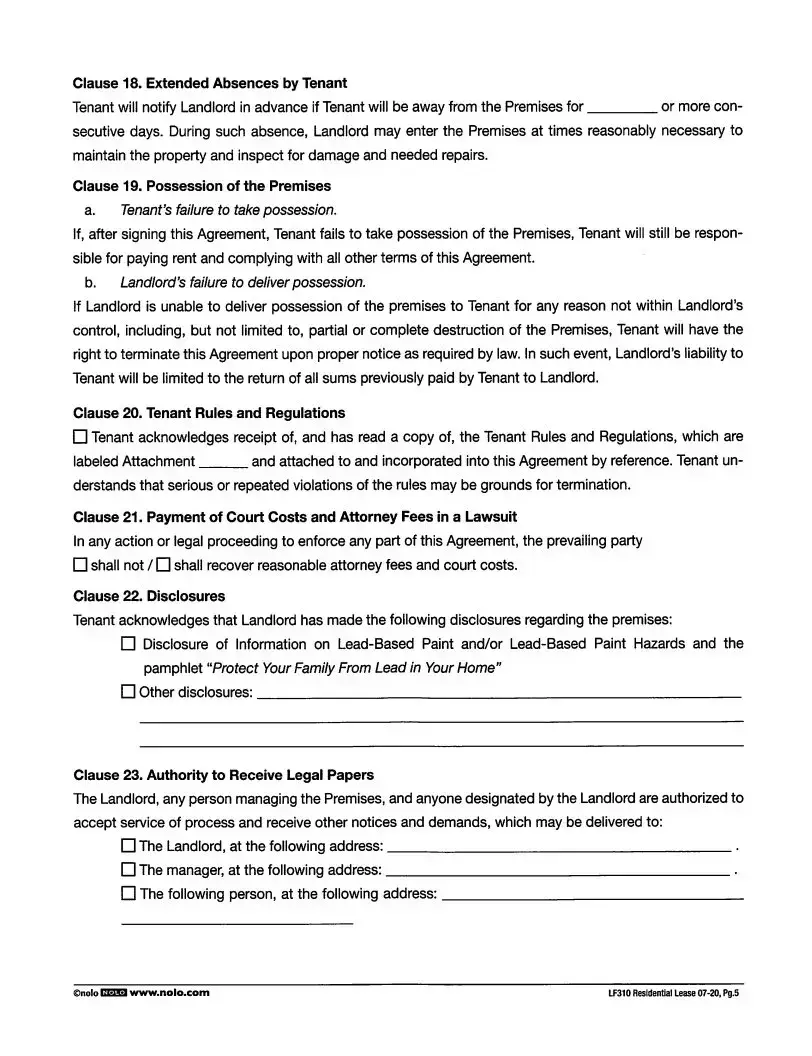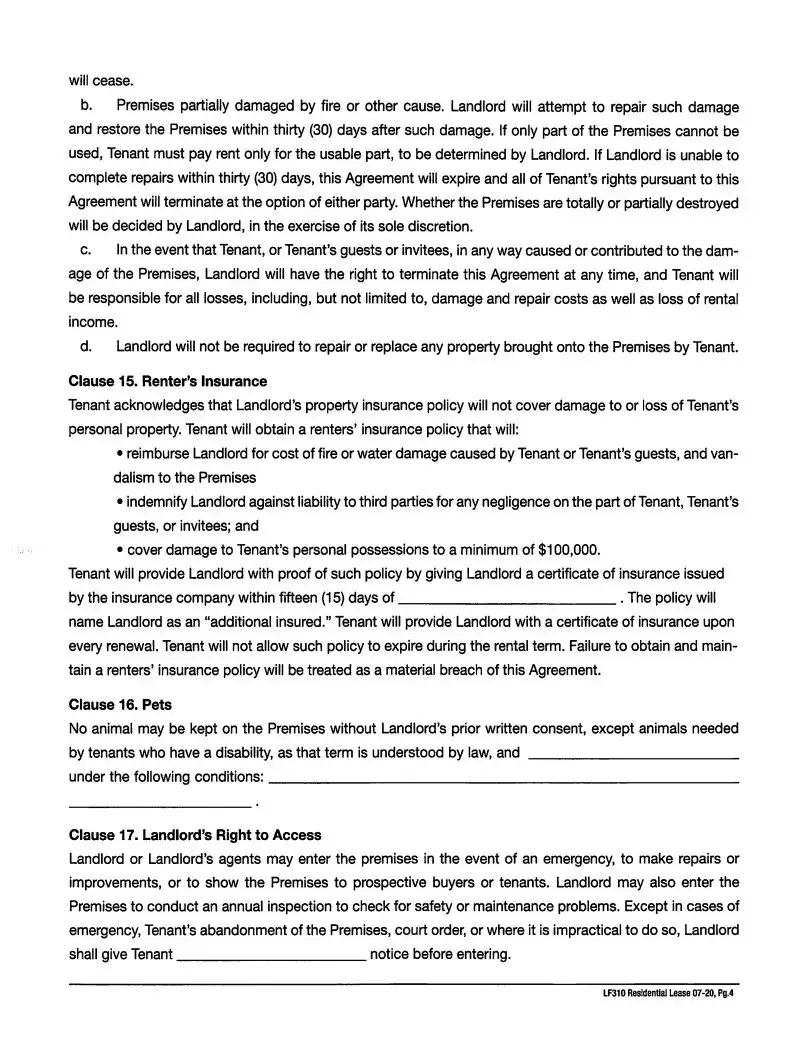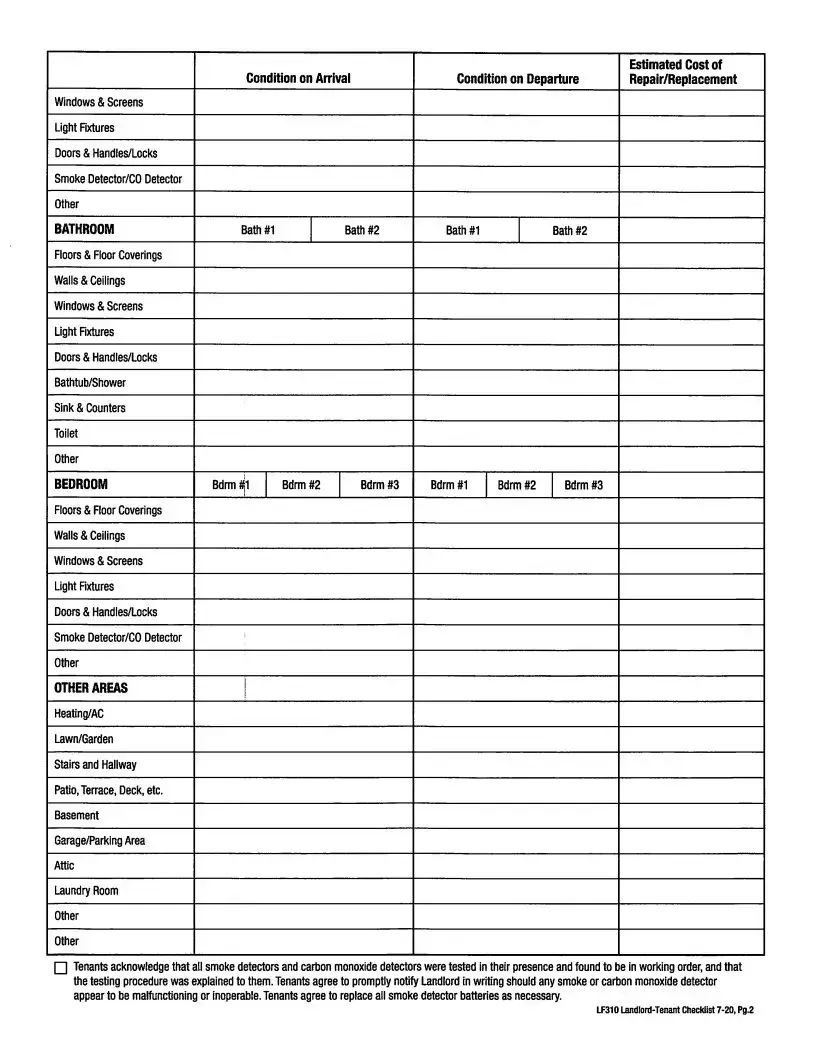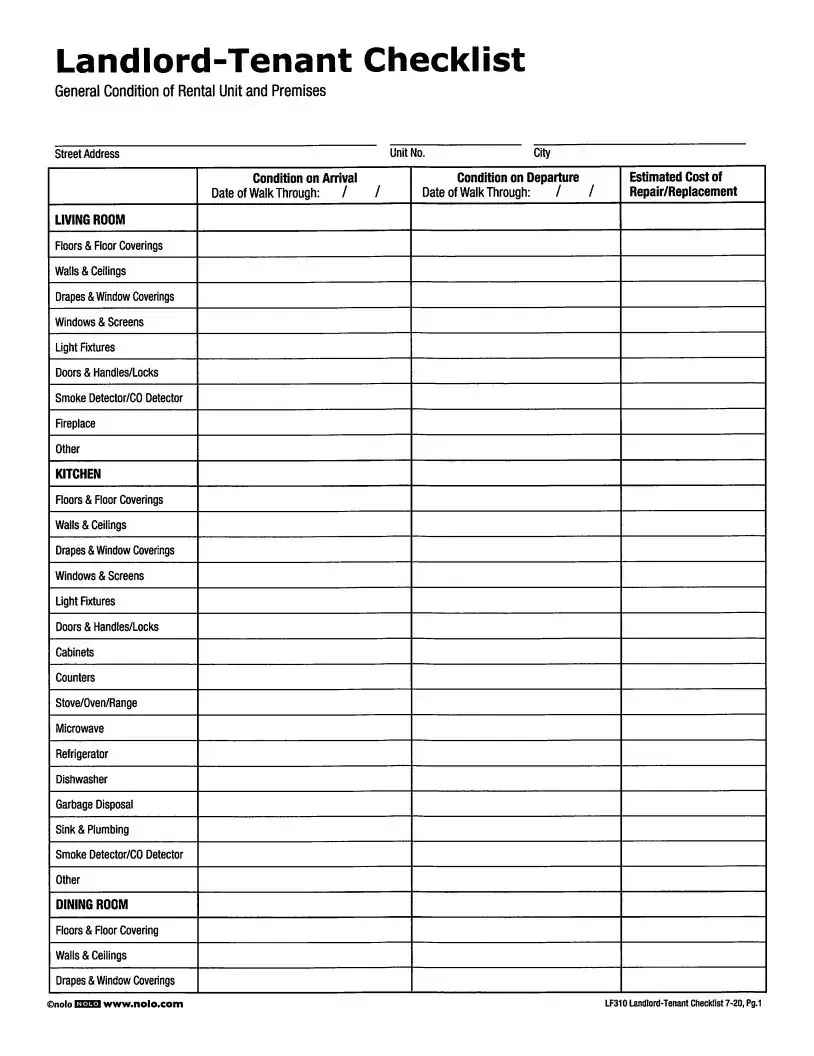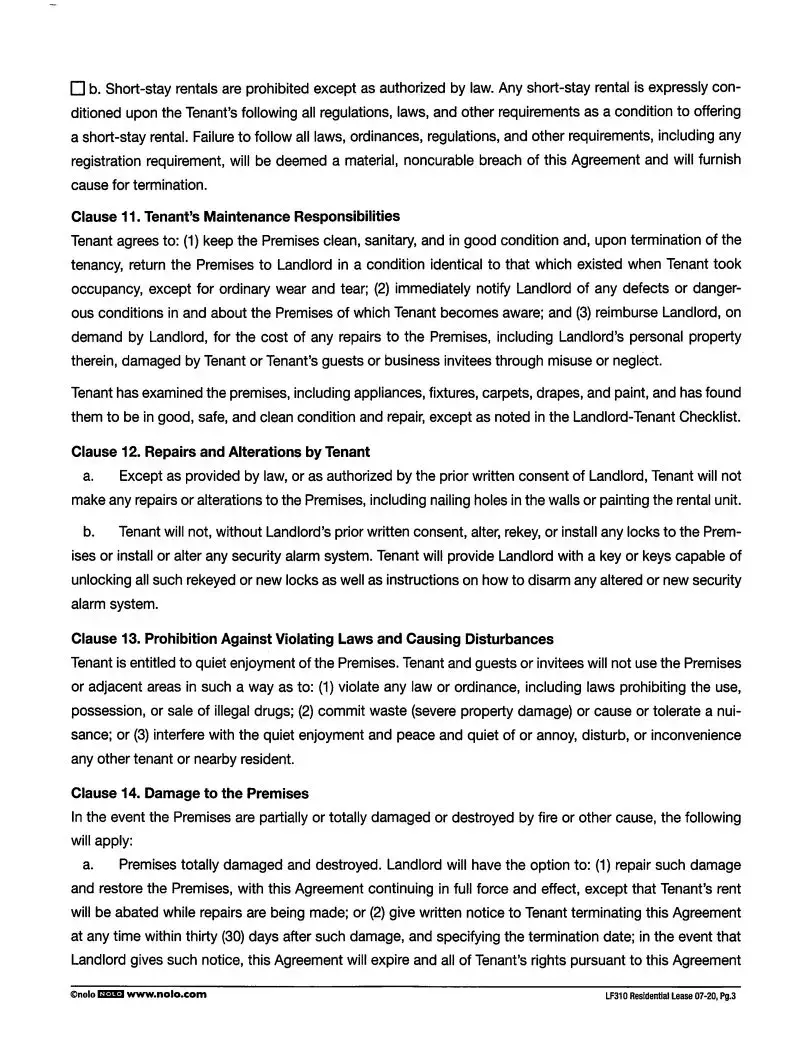What is included in the LF310 Residential Lease form?
The LF310 Residential Lease form details the agreement between the landlord and tenant regarding the rental of residential premises. It identifies both parties, specifies the rental property, and outlines essential terms such as the rental amount, payment dates, security deposits, and responsibilities for utilities. It also addresses restrictions on use, occupancy limits, and conditions for subletting the premises.
How is rent payment structured in the LF310 Residential Lease?
Under the LF310 form, tenants are required to pay a specified monthly rent amount on the first day of each month. If this day falls on a weekend or legal holiday, the payment is due on the following business day. The form allows for various methods of payment, such as cash, checks, or electronic transfers, ensuring flexibility for both parties. Additionally, if rent is not paid on time, late charges are outlined to incentivize timely payments.
What happens to the security deposit according to the LF310 Residential Lease?
Upon signing the LF310 Residential Lease, tenants must pay a security deposit, which cannot be used as the last month's rent without the landlord's written consent. After the tenant vacates the property, the landlord is obligated to return the deposit within a specified timeframe, provided the tenant has returned the keys and given a forwarding address. If any part of the deposit is retained for damages or unpaid rent, the landlord must provide an itemized statement explaining these charges.
What are the restrictions regarding occupancy and subletting in the LF310 Residential Lease?
The LF310 Residential Lease clearly states that the rental premises are intended for private residential use by listed tenants and their minor children only. Tenants cannot have guests stay beyond a specified time without prior written consent. Moreover, subletting or assigning the lease to another person is strictly prohibited unless written permission is obtained from the landlord. This ensures that the landlord maintains control over who resides in the property.
